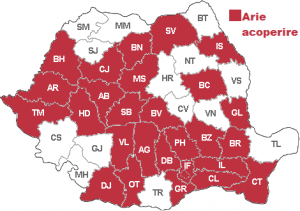For real estate transactions
– the document attesting the ownership right over the valued good (ex: Sale-purchase contract, Inheritance, etc.);
– Land Book extract for information;
– The urbanism certificate, valid at the date of the evaluation, showing the development possibilities (POT, CUT, destination, restrictions, etc.) – in the case of free lands (vacant) located in the built-up area of the locality;
– Cadastral documentation containing:
– location and delimitation plan (in case of built and unbuilt lands);
– level surveys containing the recapitulation of areas (for all types of buildings);
– Other specific documents, depending on the type of property assessed (permits, authorizations, etc.).
* It is mandatory to identify real estate, at least based on a document from those listed below:
– Postal address (street and number);
– Location and delimitation plan containing the inventory of 1970 Stereo coordinates;
– Cadastral plan extract on Orthophotoplan (color);
– The real estate property benefits from a new electronic identifier (available on the ANCPI website – http://geoportal.ancpi.ro/geoportal/imobile/Harta.html)
* The areas used in estimating the value must be based on areas mentioned in a document issued by a natural or legal person authorized to carry out specialized works in the field of cadastre, geodesy, and cartography, according to law.
* If the documents submitted do not reflect the situation found during the inspection, additional documents will be requested (building/demolition permit, operating permit, technical expertise report, etc.).
* The quality of authorized evaluator does not offer competencies in the field of surface measurement, the responsibility for their correctness being of the persons who prepared the documents underlying the evaluation. If the assessor has doubts about these areas, he will ask for clarifications and instructions from the designated user.




